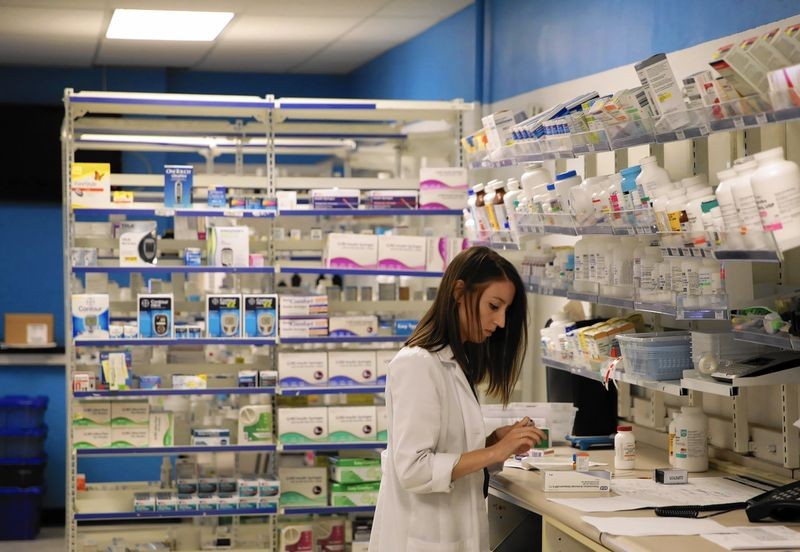
Big Tobacco-level legal action and judgements are pitting the major players in America’s opioid crisis against each other, leaving courts – and the court of public opinion – to decide who’s responsible for the nationwide public health crisis.
Drug manufacturers, physicians and pharmacists point the finger at each other. The government, specifically the Drug Enforcement Administration (DEA), is also on the hook, accused of failing to use its wealth of data monitoring opioid supply and disbursement to blow the whistle on malicious individuals and groups. Interestingly, the DEA is responsible for putting the very regulations in place to control how the others conduct business.
The crisis is undeniable, but this a blame game of epic proportions. But even when the litigation dust settles, the question of managing the epidemic remains.
Problems with SOM
The last link in the chain of entities putting opioids in the hands of consumers, pharmacies and the pharmacists they employ play a critical role in addressing and mitigating the epidemic.
The Suspicious Order Monitoring (SOM) requirement in the DEA-created Controlled Substances Act mandates that opioid distributors are required to have a system in place to monitor and disclose questionable orders of controlled substances.
While it’s a step in the right direction toward preventing prescription abuse, SOM is inherently flawed.
Antiquated
The Controlled Substances Act under which SOM was included was established in 1970 as part of the larger Comprehensive Drug Abuse Prevention and Control Act. Its purpose was to comply with international treaties which set a system for classifying controlled substances. Up until the early 1990’s, when the opioid crisis emerged, providers were trained to prescribe opioids sparingly and only for very severe pain. Because medication over prescription and its many negative implications were not of concern at the time of SOM’s enaction, how to mitigate the issue was not thoroughly addressed. In nearly 50 years, the language in the requirement has not been updated to reflect the current state of widespread prescription abuse.
Unclear
Pharmacies are charged with making data-backed decisions without a guide book for doing so. The DEA expects distributors’ systems for monitoring and reviewing orders for controlled substances to use all available data and analytics and the most accurate information in decision-making, yet what qualifies as “available” data is not defined.
Under SOM, distributors are required to conclude what qualifies an order as suspicious by considering only order frequency, size and pattern. This vague specificity means other factors that may help determine a suspicious order, such as discrepancies in number of pills ordered vs. number of pills given out, go overlooked.
Additionally, and perhaps most frustrating, SOM lacks an established set of metrics signaling pharmacies’ success in meeting its requirements.
Pharmacies are at an impasse. If they don’t meet SOM requirements, they face punishments ranging from steep fines to loss of their controlled substances license. Despite their best efforts, they can’t ensure compliance without tools and systems in place helping them do so.
Misdirected
While prescription monitoring is part of a pharmacist’s job, most entered the field desiring to prioritize patient care. Pharmacists want to help patients get well. They are not trained to use advanced technology to design and operate systems to monitor and disclose questionable orders of controlled substances.
Pharmacies are essentially running a marathon without road signs or a finish line.
Taking Pharma to Task
Pharmacies are struggling to fill in the blanks of the ambiguous framework they’ve been given by the DEA. They’re also shouldering blame from drug manufacturers and distributors who have done very little to help solve the problem.
Late last month, Johnson and Johnson was ordered to pay the state of Oklahoma $572 million for its role in proliferating the opioid crisis that’s claimed the lives of an estimated 6,000 of its residents since 2000. The case against the billion-dollar corporation was centered on the claim the company used “false, misleading and dangerous marketing campaigns” to deceive the public into believing increasing opioid prescriptions would help solve undertreated pain. The ruling implied that not only did the pharma giant fail to control opioid distribution to curb abuse, it deliberately flooded the market with drugs under false pretenses.
Johnson and Johnson is not the first large pharma company to face a major payout, and it won’t be the last. Settlements totaling more than $46 million have been reached with at least 11 others including Cardinal Health, AmerisourceBergen, Quest Pharmaceuticals and Top Rx. Nearly every US state and roughly 2,000 local and tribal governments have sued drug companies. In Ohio alone, more than 1,500 lawsuits have been filed. The Buckeye State, dubbed an opioid epidemic “hot spot,” has been hit especially hard by the crisis. It’s one of a handful of states in the eastern half of the country where opioid-related mortalities have doubled every three years.
A Crossroads
Most defendants in past and pending litigations are wholesale manufacturers and distributors, but pharmacies aren’t in the clear. This past summer, Walgreens and CVS were two of the country’s retail pharmacy chains named in a lawsuit set to go to trial in October. The news came around the same time data from the DEA’s Automated Reports and Consolidated Ordering System (ARCOS) was released revealing a “transaction-by-transaction account of how opioid pain pills were made, distributed and sold by pharmacy chains from 2006 through 2012.” As the data is reviewed, it’s fair to assume additional retail pharmacies will come under fire for potentially negligent activity.
Pharmacies are at an impasse. If they don’t meet SOM requirements, they face punishments ranging from steep fines to loss of their controlled substances license. Despite their best efforts, they can’t ensure compliance without tools and systems in place helping them do so.
Thankfully, technology that automates drug inventory and purchasing and ensures compliance does exist. It’s simply up to pharmacists to embrace it.
With the right partnerships in place, we can empower pharmacists and change the narrative around their role in the opioid epidemic.
I’d love to speak with you about how OrderInsite helps pharmacies become part of the solution instead of a contributor to the problem by managing – not just monitoring – suspicious orders.


